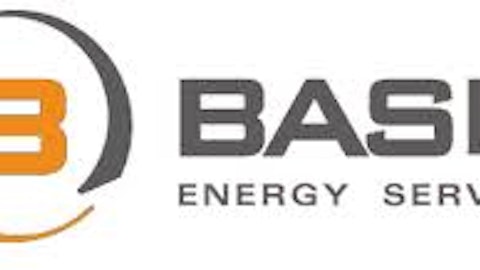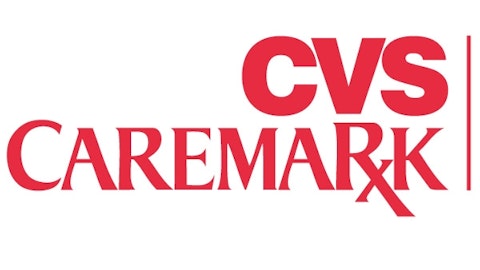
At the end of the second quarter, WL Ross held close to one-ninth of its capital in domestic equities, as noted by our 13F records. Over the third quarter, which ended on September 30th, the market value of Ross’s stock portfolio appreciated by approximately 2%, from $1.06 billion to $1.08 billion. Of the ten positions held in Ross’s 13F, seven were unchanged, and three were reduced in size. For the sake of brevity, we’re going to take a closer look at Ross’s two largest holdings that he elected to hold steady, and the three that he decided to tighten up on.
In terms of market value, the two largest positions in Ross’s portfolio were BankUnited (NYSE:BKU) and Assured Guaranty Ltd. (NYSE:AGO). BankUnited, a mid-cap holding company with banking, financial advisory, and wealth management services, gained 4.4% last quarter and has made investors a 2.4% return since the start of 2012. Assured Guaranty, meanwhile, is a holding company with subsidiaries that provide credit protection products to state governments, utility facilities, large-scale infrastructure projects, and various asset-backed securities. Assured Guaranty has been in the red, albeit by less than a percentage point, since the beginning of the year.
Assured was one of the few credit protection firms to pull out of some of the housing market’s riskiest assets much earlier than its competitors, as it became largely disassociated with mortgage backed securities and collateralized debt obligations before real estate prices began to unhinge in the summer of 2006.
In addition to this qualitative bonus, the company has managed to blow away its competition in terms of annual revenue (48.7%) and earnings (75.8%) expansion post-recession, averaging growth rates more than four times that of the specialty insurance industry average. Now, analysts do expect Assured’s bottom line growth to slow down considerably over the next half-decade, with estimates averaging 3-4% a year, but its stock trades at a bargain basement price. With measly trailing (4.3X) and forward (5.0X) earnings multiples, it appears that investors have overreacted to this slowing growth, making Assured a good value play.
BankUnited, on the other hand, has seen a rather stagnant top line since the recession, as moderate gains in the loans and leases arena have been offset by declines in non-interest revenues. In its most recent quarter, the company beat the Street’s earnings estimates by four cents, reporting an EPS of $0.48, up three cents from one year earlier.
Over the longer term, sell-side analysts expect BankUnited to see moderate expansion, as consensus averages call for 5-6% annual growth over the next five years. Boosted by solid loan and deposit revenues, BankUnited’s real strong suit is its ability to cut costs, particularly in terms of OREO and foreclosure expenses. Investors, though, haven’t seemed to notice, as the stock sports a trailing P/E nearly 14% below the regional banking industry’s average.
Moving on to the trio that Wilbur Ross decided to trim last quarter, we have BioScrip Inc. (NASDAQ:BIOS), Key Energy Services, Inc. (NYSE:KEG), and United Continental Holdings Inc (NYSE:UAL). Ross’s most bearish move was in BioScrip, the small cap clinical management company, in which he reduced his holdings by 87%. BioScrip has been a world-beating investment since the start of 2012, generating a return of more than 80%, and in its most recent earnings report, the company excelled past expectations. At the end of the last quarter, BioScrip reported an adjusted EPS of seven cents, far above the Street’s forecast of a one-cent loss.
From an earnings standpoint, BioScrip’s bottom line is expected to grow more quickly over the next five years than it has in the past, as analysts are forecasting annual EPS growth of 25.0%, compared to the past half-decade’s average of 22.9%. The company still trades at a fairly attractive earnings valuation, sporting a P/E of just 7.1X, and also trades at a PEG of less than 1.0. In short, Ross’s downsize of BioScrip looks to be motivated by profit-taking, as capital gains taxes look set to rise from 15% to 20% by the end of the year, and an investment income surtax of 3.8% comes into effect. This company still looks set for continued appreciation, and individual investors wouldn’t make a bad play by buying in now.
Key Energy Services and United Continental Holdings, meanwhile, were downsized by 26% and 22% respectively, as each has been in the red over the past six months. Key Energy, the oil well services company, has been hit especially hard by low commodity prices, which has been partially responsible for a supply overhang in its natural gas segment, and customer degradation in its oil segment. The company has missed analyst estimates in two of its last four fiscal quarters, and sell-side analysts expect earnings to shrink another 17-18% next year, before rebounding in 2014.
Key Energy trades at generally attractive price multiples, but it has to be considered a value trap at the moment, which is a stance Wilbur Ross most likely agrees with. The cat that Ross downsized his position after the stock has already fallen so far in 2012 indicates that he is bearish enough on the company’s prospects to sell on a dip, so to speak.
United Continental Holdings, the result of a merger between two of the country’s largest airliners, has missed earnings estimates in each of the past two quarters. The company’s most recent underperformance comes on the back of consolidated passenger revenue per available seat mile declines of 1-2%, and a shrinkage in consolidated capacity – neither is particularly heartwarming for investors.
This disappointment comes on the toes of a revenue loss of close to $90 million as a result of flight cancellations due to Hurricane Sandy. Interestingly, fuel prices may have fallen far enough to offset these losses, at least according to Barclays airline analyst David Fintzen, who raised his Q4 earnings target slightly. On the whole, consensus estimates still expect United Continental to book a slight loss next quarter, but over the longer term, EPS growth is expected to speed up. Analysts expect UAL to grow its earnings by 13-14% a year over the next half-decade, and the company’s stock currently trades at a paltry forward P/E of just 5.4X. It might be best to wait until Q4 results are issued in January, but we like the airliner in the long run.
Going forward, individual investors would do best by taking a good hard look at each of these stocks, aside from Key Energy. Each stock has relatively attractive valuations, and should experience solid earnings growth over the next few years. For a complete look at Wilbur Ross’s 13F portfolio, continue reading at Insider Monkey.





